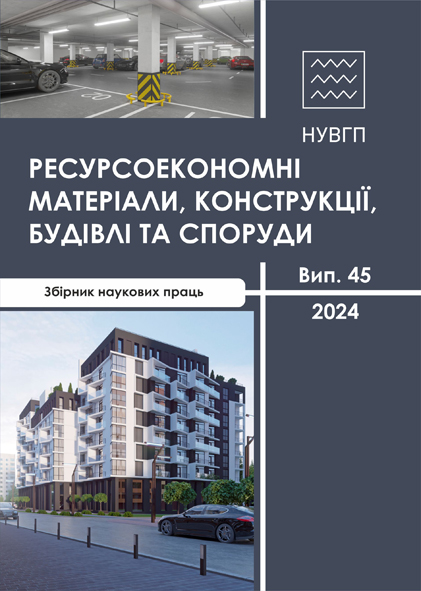RESEARCH AND STRENGTHENING OF THE LOAD-BEARING REINFORCED CONCRETE MONOLITHIC FRAMES OF THE FORMER ZENIT FACTORY
DOI:
https://doi.org/10.31713/budres.v0i45.40Abstract
In this work, based on the analysis of literary scientific and technical sources and the performed field studies, the problem of degradation of reinforced concrete structures of long-term use is formulated and its relevance is noted. The authors analyzed a number of works on the specified issues. The paper presents the results of a visual inspection and instrumental research of load-bearing reinforced concrete monolithic frames (columns and crossbars) and floor slabs of the former Zenit factory in the town of Tyachev, Zakarpattia region. General information about the building and its structural solution is provided. The task of the research included establishing the actual technical condition of the building's supporting structures and the possibility of its further reliable operation. The main reasons that caused the need for research and the development of recommendations for the elimination of detected defects and damages, as well as the shortcomings of long-term operation, were established. Data on detected defects and damage that occurred during a long period of operation are given. According to the current regulations, the general technical condition of the building was established and appropriate conclusions were formulated regarding the need for repair work. Based on the results of on-site inspections, relevant calculations and conclusions, recommendations for repair and elimination of detected defects and damage were developed. During the inspection of the building of the Zenit factory in Tyachevo, defects were found: in particular, structural defects of the monolithic reinforced concrete beams of the second and third floors. To restore the load-bearing capacity of monolithic structures, the PCC repair system of the "PAGEL" company was used, and the strengthening was carried out by applying composite tapes based on epoxy resins with carbon fibers, which were covered with composite mats and glued with resin 55 epoxy glue.

